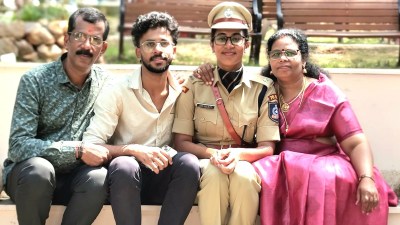Political scientist Sanjay Kumar will be guest at Explained.Live today
Exit polls give estimates about how people voted in an election. They are arrived at on the basis of interviews with voters right after they exit the polling stations, as well as other calculations related to voter data.
 Speaking to Prof Kumar will be P Vaidyanathan Iyer, Executive Editor of The Indian Express, and Monojit Majumdar, Editor, Explained, The Indian Express. (Wikipedia)
Speaking to Prof Kumar will be P Vaidyanathan Iyer, Executive Editor of The Indian Express, and Monojit Majumdar, Editor, Explained, The Indian Express. (Wikipedia)Many were surprised with the results of the Lok Sabha election. Most of those people had believed the exit polls broadcast on TV a few days previously. Why did the exit polls go so wrong?
Exit polls give estimates about how people voted in an election. They are arrived at on the basis of interviews with voters right after they exit the polling stations, as well as other calculations related to voter data.
How do exit polls conduct their surveys and reach their conclusions? How are vote shares converted into seat projections? The science of surveys, which includes exit polls, works on the assumption that data were collected after interviewing a large number of respondents using a structured questionnaire.
This method is not new; it began back in 1957 during the second Lok Sabha elections when the Indian Institute of Public Opinion conducted a poll. Without a structured questionnaire, the data can neither be collected coherently nor be analysed systematically.
Survey agencies and exit pollsters often advertise the size of their samples — India’s “biggest” poll, etc. Experience, however, shows that sometimes these ‘big’ surveys make the most embarrassing mistakes. The fact is that while surveys do need to have a certain mass of respondents. Also, how is it that surveys carried out in the West seem to produce more accurate results than those carried out in India? Are there any specific challenges that surveys in India face compared to surveys that are carried out in the West?
For answers to all these questions, listen to Prof Sanjay Kumar, a teacher and researcher of Indian electoral politics at the Centre for the Study of Developing Societies, and India’s most eminent expert on the survey method as a tool of research, at Explained.Live on Thursday evening.
Speaking to Prof Kumar will be P Vaidyanathan Iyer, Executive Editor of The Indian Express, and Monojit Majumdar, Editor, Explained, The Indian Express.







